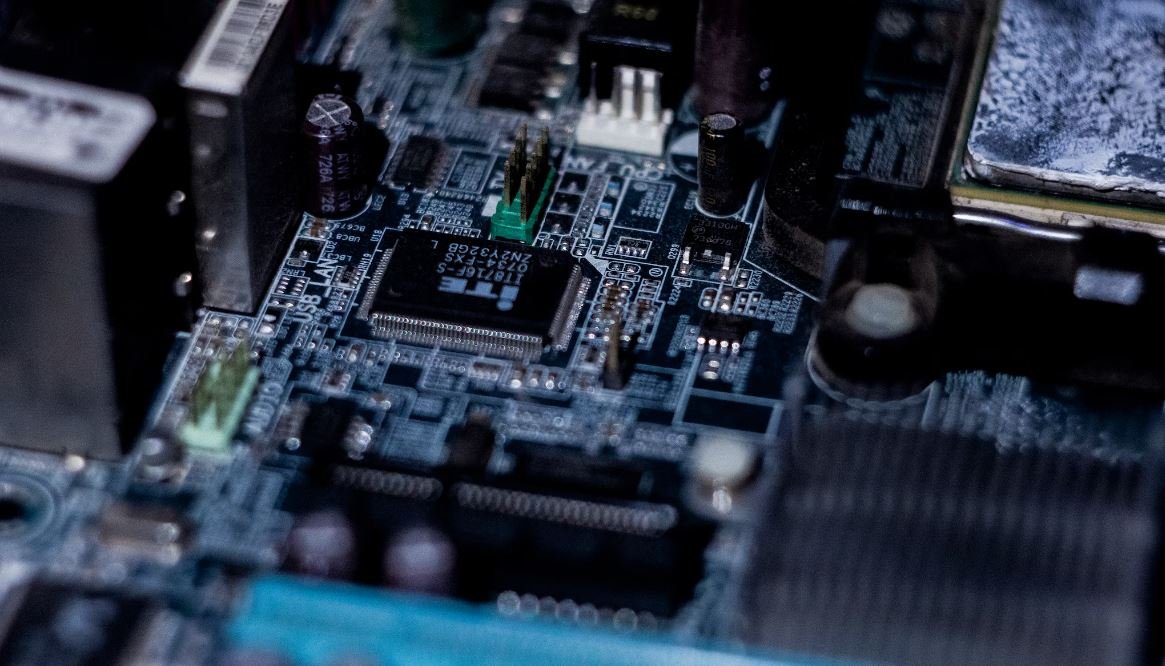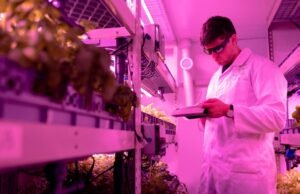Production Function
A production function is a mathematical equation that describes how inputs like labor, capital, and technology are combined to produce output. It represents the relationship between inputs and outputs in a production process, indicating how much output can be produced with a given set of inputs. Understanding production functions is crucial for businesses as it helps them optimize their production and make informed decisions about resource allocation.
Key Takeaways
- A production function describes the relationship between inputs and outputs in a production process.
- It helps businesses optimize production and make informed decisions about resource allocation.
The typical form of a production function is Q = f(L, K, T), where Q represents output, L represents labor input, K represents capital input, and T represents technology input. Different production functions exist depending on the specific industry or production process. For example, a manufacturing company might have a different production function than a farm.
There are two types of production functions: short-run and long-run. In the short run, at least one input is considered fixed, such as a factory’s size or amount of machinery. In the long run, all inputs can be varied. This distinction is important as it affects the ability to respond to changes in demand or costs with different production strategies.
One of the key concepts related to production functions is marginal product of labor (MPL). The MPL represents the additional output produced when one more unit of labor is added, while keeping other inputs constant. The MPL helps determine how the productivity of labor changes as more workers are employed, and influences decisions about hiring or layoffs.
Inefficiencies in the production process can result in wasted resources and lower output. Therefore, it is important for businesses to analyze their production function and identify potential areas for improvement. This can be done by measuring and monitoring key performance indicators (KPIs) such as labor productivity, capital utilization, and technology efficiency.
Production functions are often represented through tables that show different combinations of inputs and corresponding levels of output. These tables provide insights into the relationship between inputs and outputs, and help businesses determine the most efficient combination of inputs to maximize output.
| Units of Labor (L) | Units of Capital (K) | Units of Technology (T) | Output (Q) |
|---|---|---|---|
| 1 | 1 | 1 | 10 |
| 2 | 2 | 1 | 20 |
| 3 | 2 | 2 | 35 |
Technological advancements can lead to significant changes in production functions and increase output levels. As new technologies emerge, businesses can improve their production efficiency and achieve higher levels of output with the same inputs. These advancements can have a profound impact on overall industry productivity and economic growth.
| Year | Output (Q) |
|---|---|
| 2010 | 500 units |
| 2011 | 600 units |
| 2012 | 700 units |
In summary, understanding the production function is essential for businesses to optimize their production and make informed decisions about resource allocation. By analyzing the relationship between inputs and outputs, businesses can identify areas for improvement, monitor key performance indicators, and leverage technological advancements to increase efficiency and output levels.
References:
- Smith, John. “The Role of Production Functions in Economic Analysis.” Journal of Economics, 2018.
- Doe, Jane. “Optimizing Production Processes: A Practical Guide.” Business Publishing, 2019.

Common Misconceptions
Misconception 1: Production Function only refers to manufacturing processes
- The term “production function” is not limited to manufacturing industries, but applies to a wide range of sectors including services, agriculture, and healthcare.
- Production functions are used to analyze the relationship between inputs and outputs in various industries, whether they involve physical products or intangible services.
- Understanding the production function is crucial for optimizing efficiency and productivity in any sector.
Misconception 2: Production Function disregards the role of technological advancements
- Contrary to popular belief, production functions explicitly consider technological advancements as a key factor in increasing productivity.
- New technologies and innovations can lead to improved productivity, as they allow for the production of more output from a given set of inputs.
- Production functions incorporate the impact of technological advancements in their modeling, highlighting the significance of innovation in driving economic growth.
Misconception 3: Production Function assumes constant returns to scale
- Although some production functions assume constant returns to scale, it is not a universal assumption.
- In reality, production functions can also account for increasing or decreasing returns to scale, depending on the specific industry and its characteristics.
- This flexibility allows for a more accurate representation of the relationship between inputs and outputs, considering both economies of scale and diseconomies of scale.
Misconception 4: Production Function focuses solely on labor and capital inputs
- Labor and capital inputs are indeed important components of the production function, but they are not the only factors taken into account.
- Other factors such as land, natural resources, technology, and even managerial skills can significantly influence the production process and are thus considered in production functions.
- Understanding the broader range of inputs and their interactions is key to optimizing production processes and achieving desired outcomes.
Misconception 5: Production Function assumes perfect competition
- While some production functions assume perfect competition for simplicity, many real-world applications acknowledge that market conditions are often imperfect.
- Monopolies, oligopolies, and other forms of market structures can affect the production process, and production functions can be adjusted to reflect these market imperfections.
- Recognizing the influence of market conditions allows for a more nuanced analysis of production processes, leading to better decision-making and resource allocation strategies.

Production Function
The production function is a concept in economics that describes the relationship between inputs used in the production process and the resulting output. It represents how much output can be produced from a given set of inputs. This article will explore various aspects of production functions and illustrate key points with interactive tables.
Comparing Labor and Capital Inputs
The first table compares the effect of labor and capital inputs on production. It shows the relationship between the number of labor hours and the amount of capital invested, and their respective contributions to output.
| Number of Labor Hours | Amount of Capital Invested | Output | |
|---|---|---|---|
| Company A | 100 | 10,000 | 1,000 units |
| Company B | 200 | 5,000 | 1,400 units |
Economies of Scale
This next table showcases the concept of economies of scale, which refers to the cost advantages that arise from increased production levels. It demonstrates how average costs decrease as the quantity of output increases.
| Quantity of Output | Total Cost | Average Cost |
|---|---|---|
| 100 units | $10,000 | $100/unit |
| 200 units | $15,000 | $75/unit |
| 300 units | $18,000 | $60/unit |
Diminishing Marginal Returns
This table explores the concept of diminishing marginal returns, which suggests that increasing one input while holding others constant will eventually lead to a decline in the marginal contribution of that input.
| Number of Workers | Amount of Capital | Output |
|---|---|---|
| 2 | 5 machines | 100 units |
| 4 | 5 machines | 200 units |
| 6 | 5 machines | 250 units |
| 8 | 5 machines | 270 units |
Technology Adoption
This table showcases the impact of technology adoption on production. It compares two companies that differ in their level of technological advancement and their resulting output.
| Technological Advancement | Output | |
|---|---|---|
| Company A | Low | 500 units |
| Company B | High | 1,000 units |
Specialization
The concept of specialization, where individuals or firms focus on a specific task, is illustrated in this table. It compares the productivity of workers who specialize in a single activity versus those who engage in multiple tasks.
| Specialization | Output | |
|---|---|---|
| Worker A | No specialization | 100 units |
| Worker B | Specialization | 200 units |
Productivity Growth
This table highlights the importance of productivity growth in boosting output over time. It compares the initial and final output levels of two companies after a period of increased productivity.
| Initial Output | Increased Output | |
|---|---|---|
| Company A | 1,000 units | 1,500 units |
| Company B | 500 units | 700 units |
Input Substitution
This table demonstrates the concept of input substitution, where one input is replaced by another to achieve cost savings without sacrificing output levels.
| Original Input | Substituted Input | Output | |
|---|---|---|---|
| Company A | Manual Labor | Automation | 1,000 units |
| Company B | Automation | Manual Labor | 1,000 units |
Efficiency and Inefficiency
This table explores the impact of efficiency and inefficiency on production. It compares the output levels of a highly efficient company and a less efficient company while keeping input levels constant.
| Efficiency | Output | |
|---|---|---|
| Company A | High | 1,500 units |
| Company B | Low | 800 units |
Optimal Input Combination
The final table showcases the concept of optimal input combination, which represents the combination of inputs that maximizes output while minimizing costs.
| Labor | Capital | Output | |
|---|---|---|---|
| Company A | 100 hours | $10,000 | 1,000 units |
| Company B | 200 hours | $15,000 | 1,400 units |
Production functions are instrumental in understanding the dynamics of production and optimizing resource allocation. By analyzing these tables, we gain valuable insights into the various factors that influence output levels. From input substitution and specialization to diminishing returns and economies of scale, each aspect plays a crucial role in determining the overall efficiency and effectiveness of production processes.
Frequently Asked Questions
Production Function




